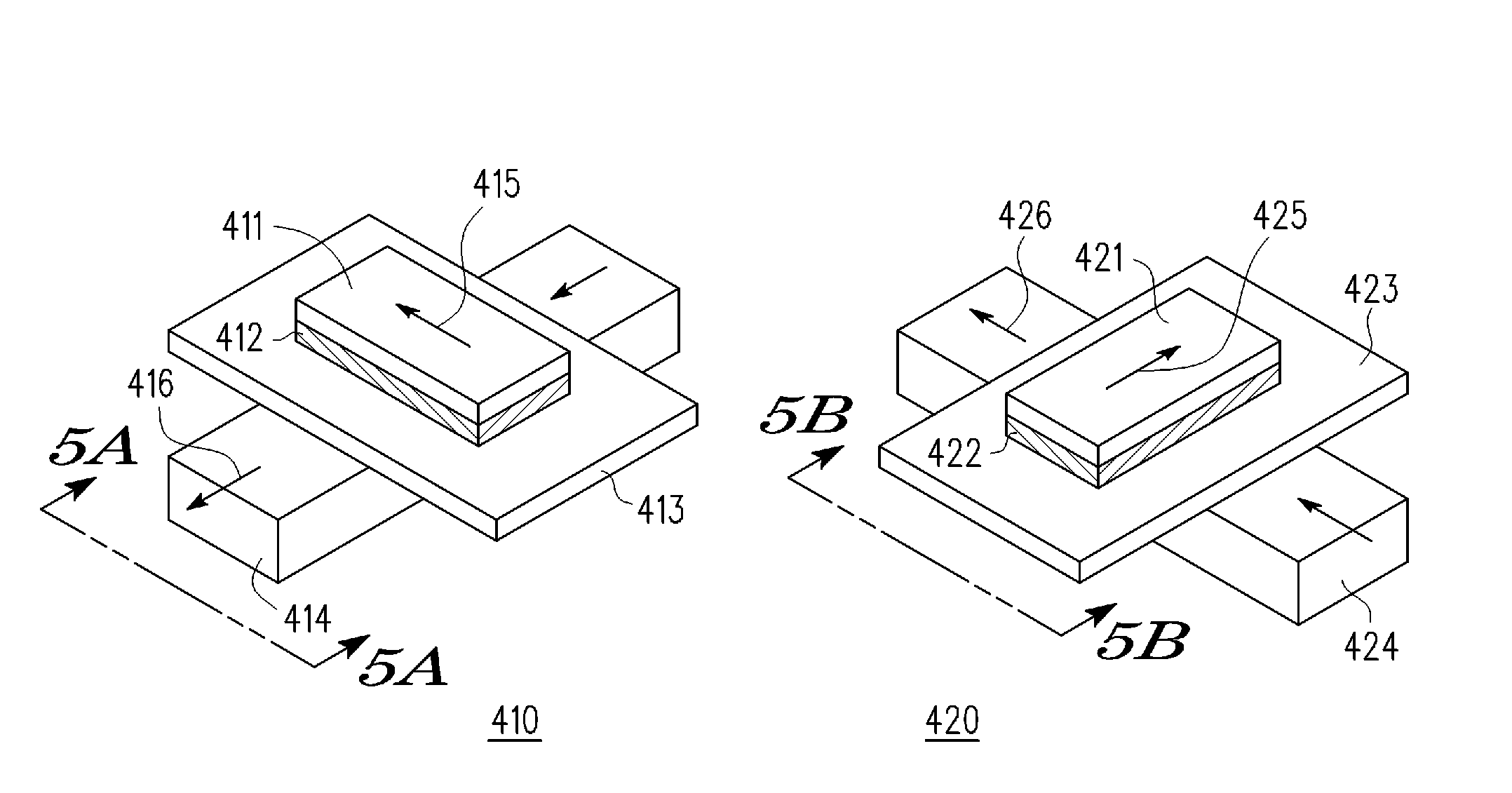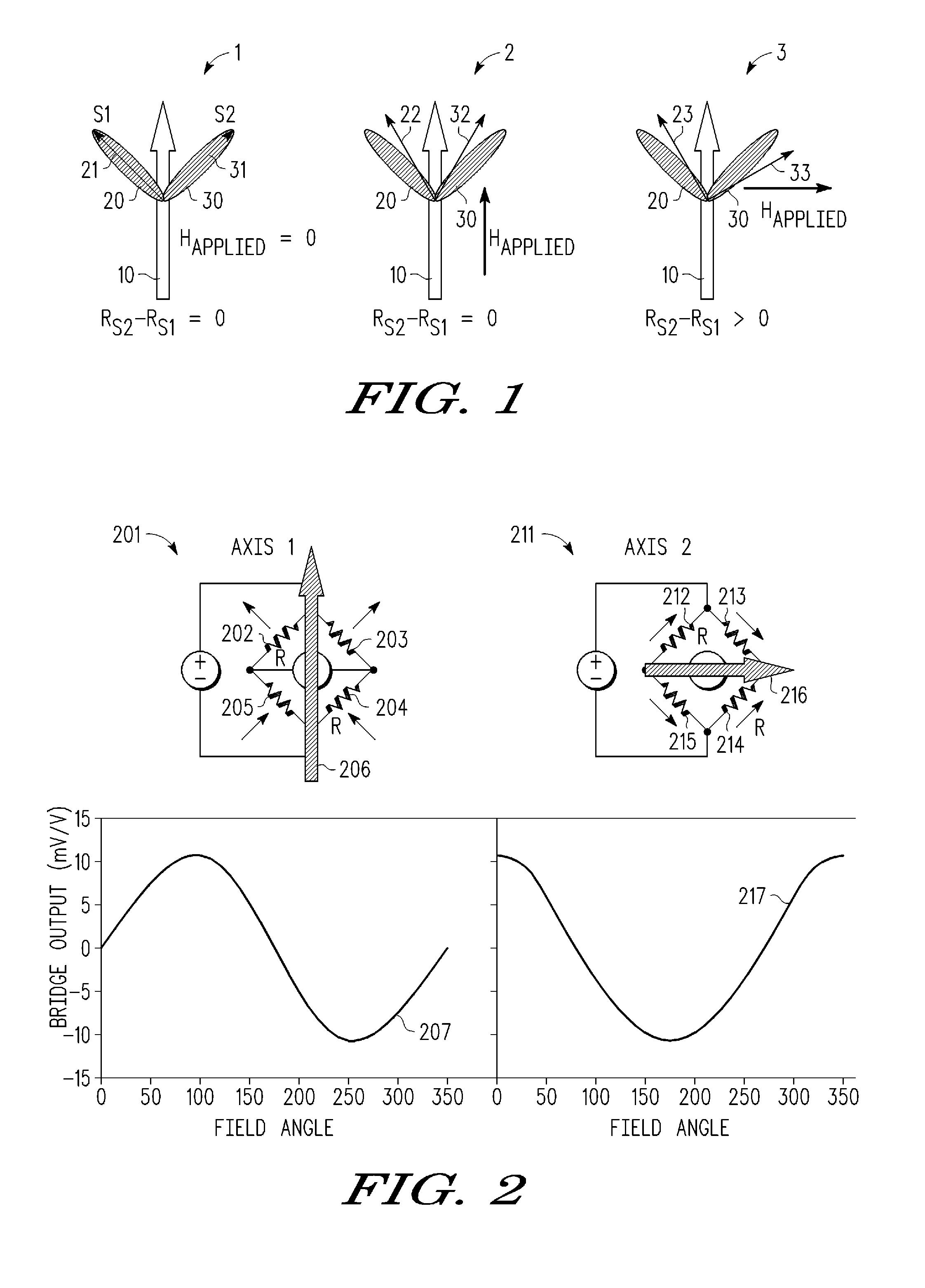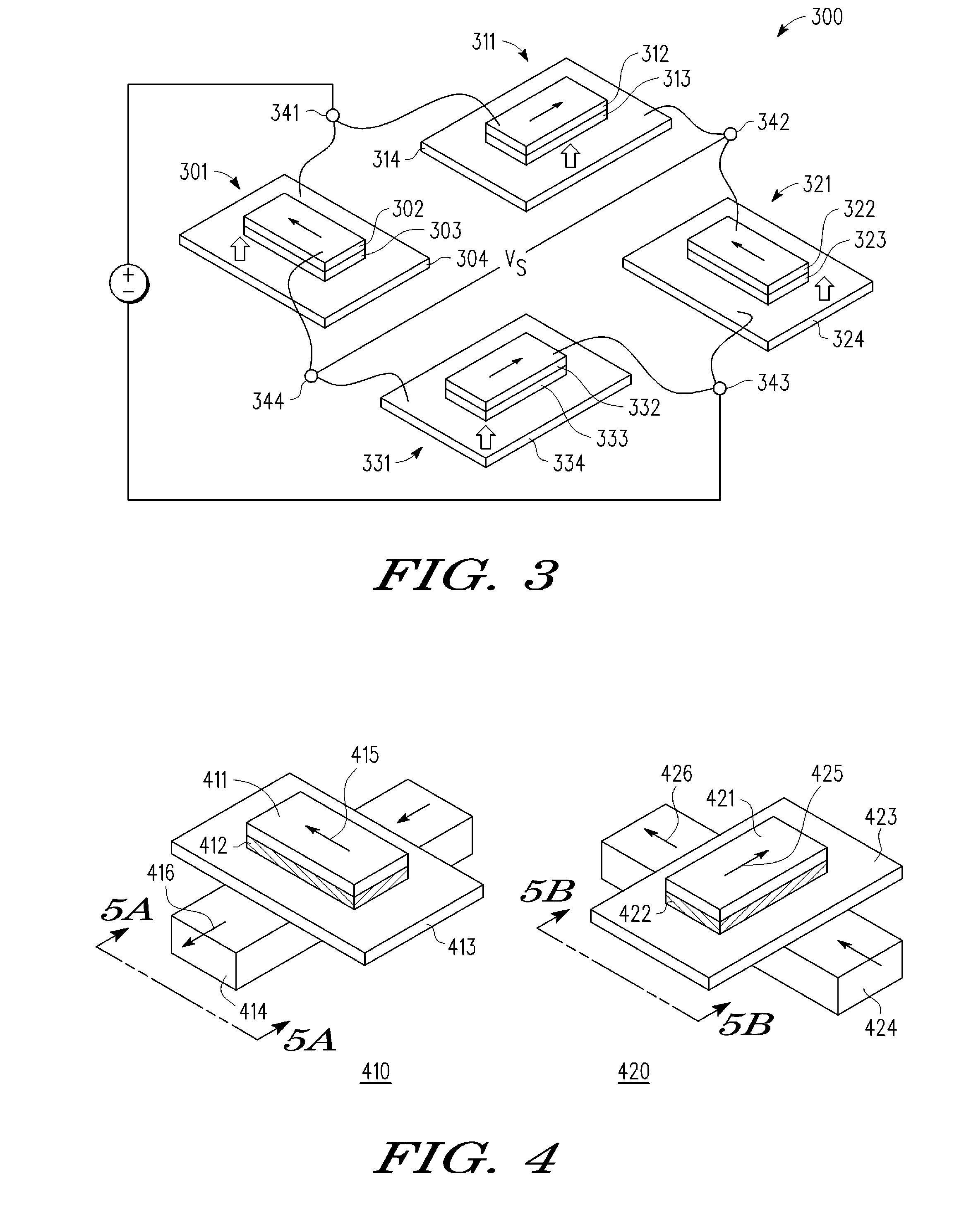Magnetic Sensor Design for Suppression of Barkhausen Noise
a technology of barkhausen noise and magnetic sensor, applied in the field of magnetic sensor design, can solve the problems of cost, circuit area, power consumption, etc., and achieve the effect of reducing the cost of amr sensor configuration, and reducing the cost of amr sensor
- Summary
- Abstract
- Description
- Claims
- Application Information
AI Technical Summary
Benefits of technology
Problems solved by technology
Method used
Image
Examples
Embodiment Construction
[0019]A method and apparatus are described for fabricating a differential sensor in which unshielded sense elements are formed over pinned layers having a single pinning direction and are dynamically stabilized with an aligned field pulse that is applied periodically (e.g., during each measurement cycle). Using shape anisotropy, the shapes of two sense elements may be formed to have magnetizations that are angled equally in different directions from a single magnetization direction of the pinned layer so that the sense layers will deflect in response to an externally applied magnetic field. With this configuration, a single axis magnetic sensor may be formed from a single pinning direction, or a compass circuit may be formed from two differential sensor circuits so that only one pinning direction is required for each axis, thereby simplifying and reducing the manufacturing cost and complexity. In an example implementation, each differential sensor circuit is constructed as a Wheatst...
PUM
 Login to View More
Login to View More Abstract
Description
Claims
Application Information
 Login to View More
Login to View More - R&D
- Intellectual Property
- Life Sciences
- Materials
- Tech Scout
- Unparalleled Data Quality
- Higher Quality Content
- 60% Fewer Hallucinations
Browse by: Latest US Patents, China's latest patents, Technical Efficacy Thesaurus, Application Domain, Technology Topic, Popular Technical Reports.
© 2025 PatSnap. All rights reserved.Legal|Privacy policy|Modern Slavery Act Transparency Statement|Sitemap|About US| Contact US: help@patsnap.com



